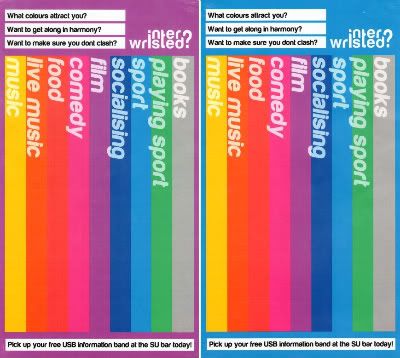 The next project was an extension of the last one. We had to create a mail shot, incorporating the three posters that we created for the last brief. Again we were set a similar task at the beginning, and told to create five open questions, five closed questions, five statements of fact and five statements of opinion. An incredibly interesting fact that I discovered, was the the fact that you can only become psychologically addicted to ketamine, not physically. I thought this was a great little bit of information that not many people would know, and it also tied in nicely with the brain illustration that I had drawn previously.
The next project was an extension of the last one. We had to create a mail shot, incorporating the three posters that we created for the last brief. Again we were set a similar task at the beginning, and told to create five open questions, five closed questions, five statements of fact and five statements of opinion. An incredibly interesting fact that I discovered, was the the fact that you can only become psychologically addicted to ketamine, not physically. I thought this was a great little bit of information that not many people would know, and it also tied in nicely with the brain illustration that I had drawn previously.  We were told to address the 'What, Why, How, Who?' first, before we started to design anything technically. This required a lot of brainstorming and thinking, something which I hadn't experienced much of in the past. However, I sat down and did what I needed which led to me being able to compose an appropriate mailing list of recipients for my mail shot. It ranged from health clinics to youth hostels.
We were told to address the 'What, Why, How, Who?' first, before we started to design anything technically. This required a lot of brainstorming and thinking, something which I hadn't experienced much of in the past. However, I sat down and did what I needed which led to me being able to compose an appropriate mailing list of recipients for my mail shot. It ranged from health clinics to youth hostels. Once I had all the written information that I needed, I started to design my envelope and the information that would feature on the inside. I had previously decided that it would 'Inform' my chosen target audience and therefore would not be as sarcastic and intimidating as my previous designs. I wanted to keep the same colour scheme and basic features, including my designed typeface and brain illustration.
Once I had all the written information that I needed, I started to design my envelope and the information that would feature on the inside. I had previously decided that it would 'Inform' my chosen target audience and therefore would not be as sarcastic and intimidating as my previous designs. I wanted to keep the same colour scheme and basic features, including my designed typeface and brain illustration.We were given a very bland manilla enevelope that we were told we could do anything with, basically completely redesign it. As long as the dimensions were kept the same and it could fit throught the post box it was OK. I decided to flip the envelope from landscape to portrait, that way adresses would fit on the front better. I also made it so no glue was required to hold the envelope shut. I settled on having my flyer landscape, so that it would fold simply out of the envelope, after looking at paper folding designs that were just too complicated. I also decided that aswell as having a fold out flyer, a small information card would also be contained inside. This way a person who needs the information straight away and all of the time can carry the card around with them.




















